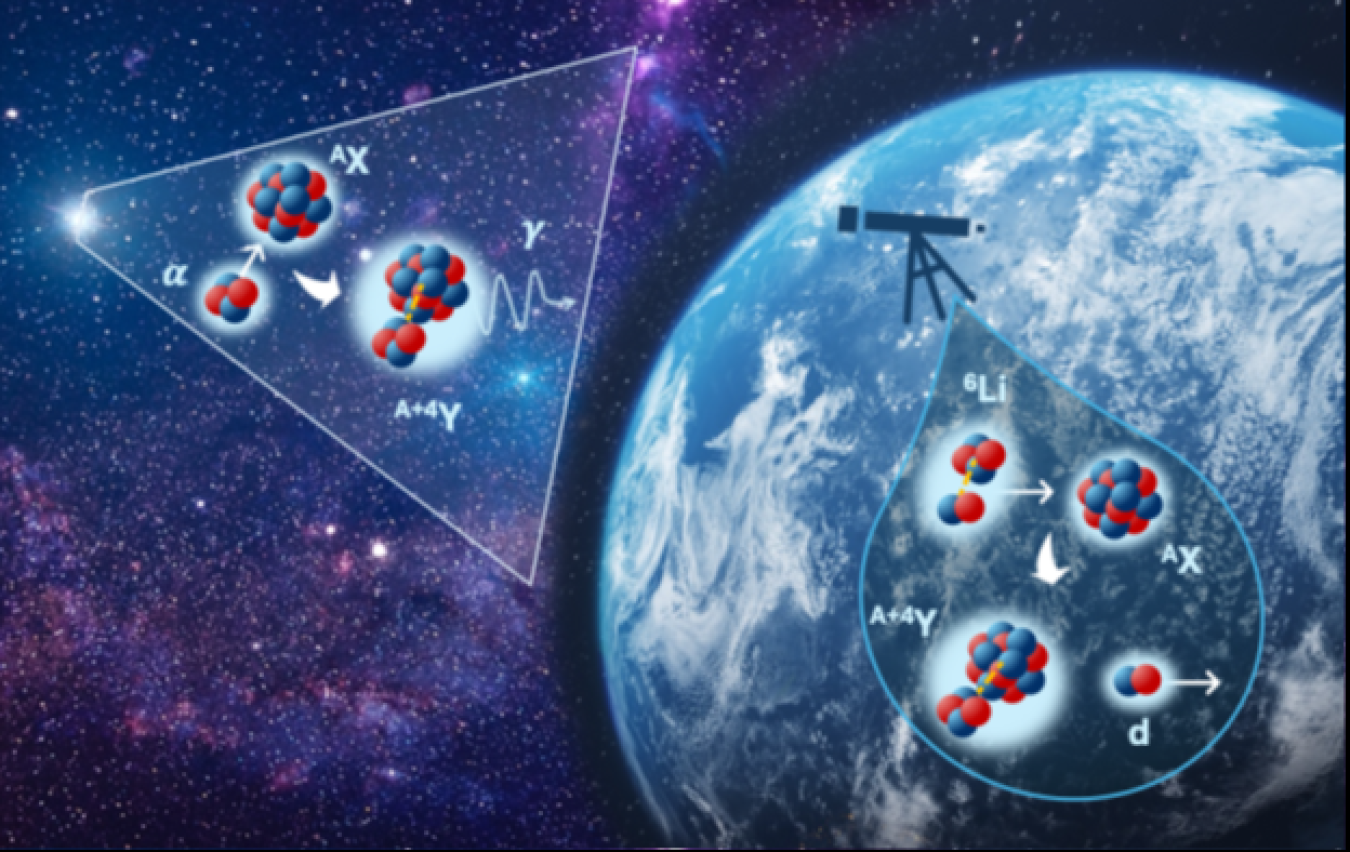Theoretical calculations enable more accurate determination of reaction rates for modelling primordial lithium-6 abundance and massive stars’ lifecycle.
July 9, 2025The Science
Fusion reactions induced by helium-4 (also known as alpha particles) are crucial for creating elements heavier than lithium. They also drive the life cycle of stars. Directly measuring certain fusion reactions in accelerator-based experiments on Earth is nearly impossible, as they occur very rarely. Instead, scientists use measurements on Earth to estimate what happens at the lower energy found in stars. To improve their estimates, researchers also often rely on properties inferred from reactions that are easier to measure. Recent calculations have strengthened the determination of these inferred nuclear properties.
The Impact
The new calculations have reassessed the alpha () fusion rate that formed lithium-6 during the Big Bang. This reassessment confirmed the discrepancy between the observed lithium-6 abundance in the Big Bang with the predicted abundance. The calculations also revised the properties of two oxygen isotopes inferred from reactions measured on Earth. These revisions explain the disagreement between two recent evaluations of fusion rates of particles with carbon-13 to produce oxygen-16 and a neutron (13C(,n)16O) in small to medium-size stars. The revisions also predict a 21 percent reduction compared to previous estimates for the fusion with carbon-12 that forms oxygen-16 (12C(,γ)16O) in massive stars.
Summary
Nuclear theorists from the Facility for Rare Isotope Beams (a Department of Energy Office of Science user facility) and DOE’s Lawrence Livermore National Laboratory have predicted the fusion of helium and deuterium (d) to form lithium-6 (6Li) using an advanced theoretical framework. The framework simultaneously describes the structure and reaction properties of light nuclei. By employing validated two- and three-nucleon interactions from chiral effective field theory, they reduced the uncertainty of the fusion rate by a factor of 7.
Additionally, the researchers accurately determined the s-wave asymptotic normalization for the +deuterium interaction within the produced 6Li nucleus. In collaboration with a researcher at DOE’s Argonne National Laboratory, this normalization was then employed to update the analysis of (6Li,d) transfer reactions used to determine the low-energy properties of oxygen-16 (16O) and oxygen-17 (17O). Their calculations led to a 21 percent reduction of the 12C(,γ)16O cross sections compared to previous estimates and resolved discrepancies in recent measurements of the 13C(,n)16O reaction. The researchers expect that their findings will significantly enhance the accuracy of other alpha fusion rates of astrophysical interest that are also constrained with the help of (6Li,d) transfer reactions.
Contact
Chloë Hebborn
Facility for Rare Isotope Beams, Michigan State University
hebborn@frib.msu.edu
Sofia Quaglioni
Lawrence Livermore National Laboratory
quaglioni1@llnl.gov
Funding
This work was supported by the DOE Office of Science, Office of Nuclear Physics; the Laboratory Directed Research and Development program at Lawrence Livermore National Laboratory (LLNL); and the Natural Sciences and Engineering Research Council of Canada. Computing support for this work came from the LLNL institutional Computing Grand Challenge program.
Publications
Hebborn, C., et al., Ab initio prediction of the 4He6Li Big Bang radiative capture, Physical Review Letters 129, 042503 (2022). [DOI: 10.1103/PhysRevLett.129.042503]
Hebborn, C., et al., Impact of the 6Li asymptotic normalization constant onto-induced reactions of astrophysical interest, Physical Review C 109, L061601 (2024). [DOI: 10.1103/PhysRevC.109.L061601]


